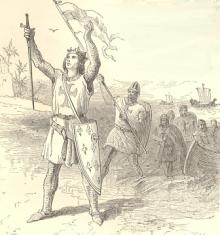Well, it’s the 6th November 2004, and the secret’s finally over. Or, I can keep it no longer and has been granted permission to blab by TokyoPop. I’m drawing a fully original, 3-book series (160 pages each) for TokyoPop, titled “The Dreaming”. It’s a mystery-horror, not quite like anything else I’ve attempted before, and more details are posted on my site at http://www.queeniechan.com/.
Recommendation: Best Movie Villains
I’m more influenced by movies than by manga, so when asked to draft up a list of favourite villains, movie villains fly to my mind. Most of my stories don’t have villains, but that doesn’t mean I don’t like seeing thoroughly evil, interesting people on the silver screen. Oddly enough, I dislike seeing mad, bad villains in manga. I also dislike seeing mad, bad villains in movies which I don’t believe are up to my high standards (I tolerate bad manga, but I don’t tolerate bad movies). The exact reason for this is difficult to pin down… it could just be down to influences. Being influenced by movies rather than manga, in my opinion, is a good thing. Helps me avoids the pitfalls of manga cliches.
I have made some strict rules for my compilation of this list:
- The villain must be a MOVIE character. This includes animation, ofcourse.
- They cannot be the film’s main character. They must be a secondary character. Sorry, Travis Bickle from “Taxi Driver”.
- They have to be irredeemably bad/evil, and not just “misunderstood” or “tortured”. Therefore, characters who are just enemies of the protagonists in a movie may not necessarily qualify.
- They have to be humanoid, or at least exhibit characteristics of a human. That rules out the Aliens in the “Aliens” Trilogy, King Kong from “King Kong, the Shark in “Jaws”, and countless other creatures that go bump in the night.
- They have to be distinct, unique individuals. They can’t be vague entities or energy masses that other antagonists in the movie channel as inspiration for bad behaviour. Out goes Satan and friends in endless films, including “The Exorcist” and “Rosemary’s Baby”.
- They must be memorable, or at least have something about them that makes them memorable. This is arbitrary, but I’ll justify my choices. Being ordinarily evil isn’t good enough to make this list.
- They had better be in a good movie in the first place. Again, this is arbitrary. And I’ve never encountered a superhero villain that wasn’t corny in some way, either.
Other than that, there are no limits on when the movies were made, where they came from or what language they speak (if they speak at all).
Best Movie Villains (In No Particular Order)
 Reverend Harry Powell (Night of the Hunter, 1955)
Reverend Harry Powell (Night of the Hunter, 1955)
Yes, first on the list is a guy you’ve probably never heard of. The exploits of the sinister and thoroughly evil Reverend Harry Powell, however, has since passed into legend. Maybe you’ve heard of him without knowing it. Take his hands, for example, on which are tattooed the words “L-O-V-E” and the word “H-A-T-E”. And then he’ll say, in that smooth-talking, unsettling manner of his, “Do you want to hear the story of left-hand and right-hand”? That he’s in a movie which resembles a nightmare only adds to the effect. Night of the Hunter has some scenes in it that has become a prototype for endless other similar scenes in lesser horror movies.
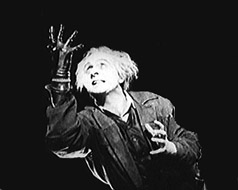 Rotwang (Metropolis, 1926)
Rotwang (Metropolis, 1926)
Ah, the grand-daddy of all mad scientists. Metropolis was made in 1926, decades before anyone had conceived of “special effects”, and yet, it is one of the most visionary sci-fi movies ever made. The hellish skyline of Metropolis became a prototype for zillions of other sci-fi movies, and from its chief antagonist, Rotwang, came legions of synthetic-limbed, shuffling loonies with over-the-top mannerisms and bubbling beakers. Rotwang is actually more sympathetic than the other characters on this list, but seeing that he inspired so many other unsympathetic characters, he still scores second place.
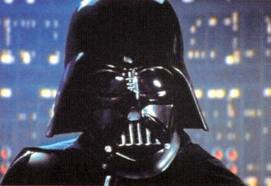 Darth Vader (The Original Star Wars Triology, 1977)
Darth Vader (The Original Star Wars Triology, 1977)
No list of Movie Villains will be complete without Darth Vader. I personally don’t like the Star Wars movies much (I’m so going to get flamed for this), since I prefer my sci-fi cerebral and complex – but Darth Vader is just so cool. His black facial armour and sinister breathing manner totally ownz Luke Skywalker. And he has a better light sabre too.
 Bill (Kill Bill, 2003/4)
Bill (Kill Bill, 2003/4)
Apart from the dastardly Bill, this spot also includes Elle Driver, Oren Ishii, and Gogo Yubari. Bill and co are the epitome of the mad, bad villain – and I love charismatic and flamboyant villains over sinister and psychotic ones. They strut, they look good in leather, they are sonuvabitches (or just bitches), and they make no apologies for killing people left, right and centre. This may sound shocking, but I love characters who kill indiscriminately, stylishly, and with minimal angst and mess for housekeeping to clean up. Bill and co embody that (unfortunately, the Bride doesn’t. Too messy).
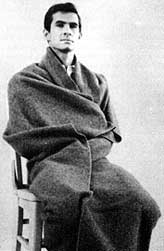 Norman Bates (Psycho, 1960)
Norman Bates (Psycho, 1960)
Not the new Psycho, but the original one directed by Alfred Hitchcock. Psycho was one of the most shocking films of the 60s, and it’s villain, Norman Bates, was an original for that time period. If you already know the story then you’ll know why. Norman Bates falls strongly into the “mad slasher psycho” category, but is way more memorable because he (a) actually has a personality of sorts and (b) genuinely appears to be a likeable young man. Recent slasher movies always introduce the chief antagonist as some no-personality, hooded stalker who conspicuously wears sub-arctic gear in tropical climates (meanwhile, teenaged female victims run around screaming in wet T-shirts). Their motives for mass slaughter are always murky and at the convenience of the plot. Psycho, on the other hand, makes Norman into someone with an agenda, and even has him interact with the other characters as a normal person would – hence, is one of the best thrillers ever made. The last shot in the movie, or Norman, creeped me out. One of the few serial killers in movies that I find genuinely scary (instead of funny).
 Hannibal Lector (Silence of the Lambs, 1992)
Hannibal Lector (Silence of the Lambs, 1992)
Hannibal the Cannibal only scores a number 6, and only the Hannibal from Silence of the Lambs count. Hannibal was alot scarier when Clarence was the main character and he was a psychopath who did artful things with people’s faces. That he was in the same movie as another psychopath called Buffalo Bill didn’t minimise his charisma, as Hannibal almost stole the movie. Part of his appear is because as a hyper-intelligent psychologist, he gives the impression he can dissect a person’s brain without even laying a fingernail on them. Hannibal would make interesting conversation at boring cocktail parties (if he doesn’t eat everyone there).
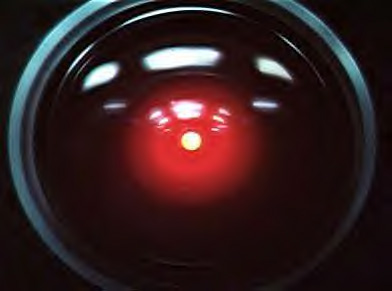 HAL 9000 (2001: A Space Odyssey, 1968)
HAL 9000 (2001: A Space Odyssey, 1968)
Not a psychopath, and not a flamboyant villain. But a coldly logical, homicidal computer. HAL 9000 is thoroughly evil, because while he knows the logical definition of “goodness” and “morality”, he deliberate chooses to act against it. His behaviour is a result of his flawed programming, which amongst computers, I believe, makes him a psychopath. HAL gets points for singing “Daisy” better than I can. It happens to be the only villain on this list with a moving “death” scene.
 T-1000 (Terminator 2, 1991)
T-1000 (Terminator 2, 1991)
Arnold Schwarzneggar gets battered by it, and it would waste that totally lame terminator in Terminator 3 (which has all the menace of a walking, talking Barbie). Nothing beats the Mercury Man. As evil machines go, the T-1000 doesn’t have as much personality as HAL 9000, but it makes up for it by being utterly unrelenting and almost impossible get rid of. Almost impossible, that is.
 Wicked Witch of the West (Wizard of Oz, 1939)
Wicked Witch of the West (Wizard of Oz, 1939)
I used to be scared of this green-faced creature. Ofcourse, now it’s just a laughing matter, especially when you see her dissolve into a puddle of goo when splashed with water. Nevertheless, the Wicked Witch remains a staple of villainy in a film that has been seen by more than 2 billion people on this planet. On the other hand, the musical “Wicked” turns her into a heroine, so it’s interesting to see that there’s a lot of sympathy for her out there.
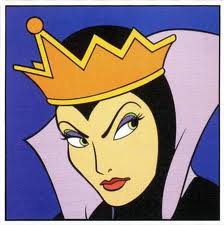 The Evil Queen (Snow White and the Seven Dwarfs, 1937)
The Evil Queen (Snow White and the Seven Dwarfs, 1937)
I hated Snow White in that movie. She voice sounded so sickenly sweet that I wanted to barf when she started singing. The Evil Queen, on the other hand, was much more interesting. Just look at her, I mean, especially when she waves her hands in front of the Mirror Mirror, and then plots Snow White’s death. My favourite scene is when she flees from the dwarves. One of the greatest animated films out there, and a sad reminder of the crap that Disney churns out these days.
Spotlight On: The Crusades (Final – Part 8)
In 1291, the Crusader-held city of Acre fell to Muslim forces. It was the last stronghold of the Crusaders, and soon after all the smaller cities held by the Crusaders were abandoned. There would be no further major attempts by the Crusaders on the Holy Lands. The Crusader Spirit, with its fervent desire to reclaim the glorious city of Jerusalem (and gain some of that Muslim wealth as well), simply faded away. In place… was the Inquisition; as the Roman Church stopped persecuting Muslims and Jews so they can start persecuting suspected heretics. This was later to have unpleasant effects for the people living in a large land mass to the west of Europe.
Positive Effects of the Crusades
Medicine, Science, Mathematics, Art, Poetry, Astronomy, Physics, Chemistry… the list goes on. These were all the things brought back from the Islamic Empire that would later spearhead the Renaissance in Europe. Even things like chess and chivalry were not native to Europe (though chess was originally Indian). It was no mistake that the Renaissance first began in Venice, where the populace was generally more worldly, cosmopolitan and exposed to the sophistication of the Muslims through their trading networks. And it was through these trading networks that many other ideas and technologies arrived to Europe from China and Indian.
At first, the Venetians and the Knights Templars held these routes in an iron grip – even though their terms were dictated by the Muslim traders. After the Knights Templars were eliminated, they were replaced only by similar organisations, and trade to Europe flourished. This was because of Europe’s integration into the Silk Road, that expansive trade network (which includes both land and sea routes) stretching from one end of Eurasia to the other. It can be said that the Silk Road was civilisation’s first instance of globalisation. Along this road came silk, spices, paper, printing, banking, paper money, gunpowder, guns, the compass, the sternpost rudder, the lanteen sail, crossbows, advanced agricultural tools, the horse collar, the telescope, matches, chess, playing cards, spinning wheel, china, toothbrushes… and many other inventions. Through these cultural transmissions, Western Europe came to learn of other advanced civilisations to the east of the Islamic Empire, namely a country called Cathay (aka China).
Negative Effects of the Crusades
While the European states wanted to get in touch with these distant lands (not least to spread Christianity around to counter the Muslim “threat”), they were unable to do so through the Islamic Empire. The goods the nobles craved from India and China were all sold to them via Muslim terms, which at times could be quite steep. The European states needed to find new ways to Cathay and the Spice Islands, and it seemed that sailing west would be the only alternative. Or so a guy called Christopher Columbus believed. It is from then onwards that certain peoples had a nasty time at the receiving end of the Spanish Inquisition.
It must be said that the Crusades did not have much effect on the development of the Islamic Empire. However, the process in which Europe forged its own identity in the world stemmed directly from the Crusades; almost entirely on how they related to the Islamic Empire. To the Europeans, Christianity was the one true religion, and Europe was locked into an eternal struggle with the Evil Forces of Islam. The good, true denizens of Europe, with their Christian ways and white skin, were vastly superior to the cruel, vulgar Saracens with their brown and black skin. The one true bastian of faith, Europe, must henceforth set out on another Crusading mission – to spread the One True Word to the lands beyond the Muslim world, where people has not yet had the good fortune to hear the Word of Christ (if indeed they are PEOPLE, as there was genuine doubt during the Spanish Inquisition over whether American Indians were the same “creatures of God” as the Europeans).
This attitude was to have enormous consequences on the way Europe later saw itself and its place in the world. It reached its peak in the racist Imperialist foreign policies of France and Britain during the Industrial Revolution, and puttered out with the genocidal ideas of Adolf Hitler and his attempts at engineering the perfect Aryan race. And it can be said that even though there are no more thuggish Christian knights attacking Muslim cities (woah, wait a minute), the legacy of the Crusades were more far-reaching and devastating than it would initially seem. Luckily, the world has gone past that and the Crusades are now only a historical relic to be learned from, by both Christians, Muslims and and anyone with an interest in the subject.
This concludes the 8-part “The Crusades” series”.
Spotlight On: The Crusades (Part 7)
Subsequent Crusades
The 5th to the 8th Crusades were largely unsuccessful, except for the 6th Crusade, which was very unusual and worth mentioning separately. The reason for lumping the 5th-8th Crusade in the same category was because after the 4th Crusade, the spirit of the Crusaders were beginning to wane. Failure after failure to capture Jerusalem weighed heavy on the consciences of the Crusaders, and the travesty of the Fourth Crusade only compounded that. The technology and wealth absorbed from the Islamic Empire also meant that the Europeans were becoming more interested in this newly-acquired body of knowledge than they were in Holy Wars. Nevertheless, the Fifth Crusade started in 1215. By the end of the 13th Century, the 8th Crusade had already come and gone, and there would be no more Crusades (there was, however, the Inquisition).
The 5th, 7th and 8th Crusades
Preparations for the 5th Crusades began almost immediately after the 4th Crusade, and in 1217 the Crusaders set out for their destination: not Jerusalem, but Egypt. Part of the reason was the wealth of the Egyptian Sultanate – Egypt for a long time was one of the major seats of power in the Islamic Empire. The Crusaders also hoped to use Egypt as a base to launch an attack on Jerusalem. However, while the Crusaders managed to take the port of Damietta after a long siege, they were prevented from advancing up the Nile when the Sultan of Egypt flooded the lower-plains of the river. Damietta was retaken in the same year, and the Crusaders returned home having achieved nothing.
The 7th (1249 AD) and 8th Crusades (1270 AD) were led by the same King, Louis IX, later canonised as Saint Louis. St Louis achieved nothing much, but he deserved the canonisation as he was one of the few Crusader kings respected by both sides. Both of his Crusades centered around Eygpt, and both times he was repulsed. In the 7th Crusade, he was captured after surrendering at the Battle of Mansourah after some initial success, and eventually ransomed. The 8th Crusade was equally ill-fated. The Crusade never made it to its destination – Louis was sidetracked by rumours of a Muslim king wishing to revert to Christianity, and ended up being stranded in Tunis with his Crusader army. There, plagued by typhus, dysentry and plague, Louis died. He was succeeded by his nephew Prince Edward of England, but that was the end of the 8th Crusade.
The Sixth Crusade
The 6th Crusade was unusual, as it was led by a Crusader King who didn’t behave like a Crusader: Frederick II of Germany (Barbarossa’s grandson). Frederick II proved that not all Crusaders believed in violence against Saracens – this one actually tried diplomacy. This is not all that surprising for the King of Germany – as Germany owned more land and riches than any other Crusading state at the time, and was in contact with some Islamic states.
Frederick II was supposed to set sail on the 5th Crusade, but fell ill with Malaria and was unable to catch up with the rest of the Crusaders. Pope Gregory IX, who never liked Frederick much anyway, promptly excommunicated him. However, this did not deter him, and in 1228 he set off with a Crusader force to Egypt. He was promptly excommunicated by Gregory IX a second time, for setting off without orders from the Pope – but judging from Frederick’s actions, he didn’t care much. He may well have been the first atheist Crusader. However, some of his Crusaders were troubled about their excommunicated status, and refused to leave; resulting in Frederick arriving in Crusader-held Acre with less a force than he originally had. This probably influenced his choices.
Instead, he entered into negotiations with the Sultan of Egypt, Al-Kamil, who knew Frederick personally anyway. Amazingly enough, Al-Kamil granted Frederick II the cities of Jerusalem, Bethlehem, and Nazareth; also the castles of Montfort and Toron, and a corridor running from Jerusalem to Jaffa. Thus, Frederick II crowned himself King of Jerusalem without even striking a blow. However, Jerusalem was very vulnerable as it was not won by waging war, and was in 1244 reclaimed by Muslim troops.
Despite Frederick’s success, all the Crusader states hated what he did. His actions were certainly maverick. They blamed the failure of the Fifth Crusade on him, and despised the fact that he negotiated with the Saracens instead of attacking them on sight (like a “real” Crusader would). I for one believe Frederick II was the greatest of all Crusader Kings – here was someone who believed in realpolitiks instead of religious fanaticism. I smile whenever I think of the way this particular Crusader King couldn’t give a damn about the religious pretensions of Europe at the time.
To Be Continued…




